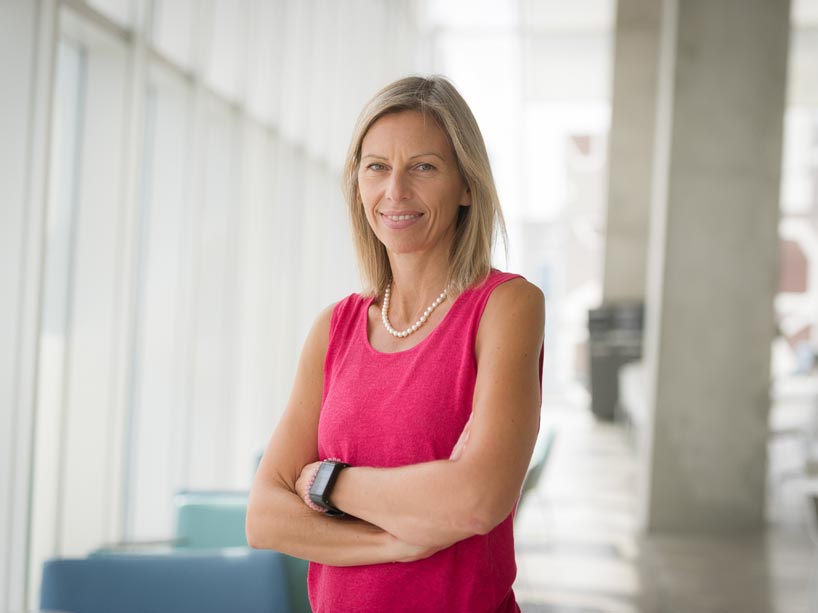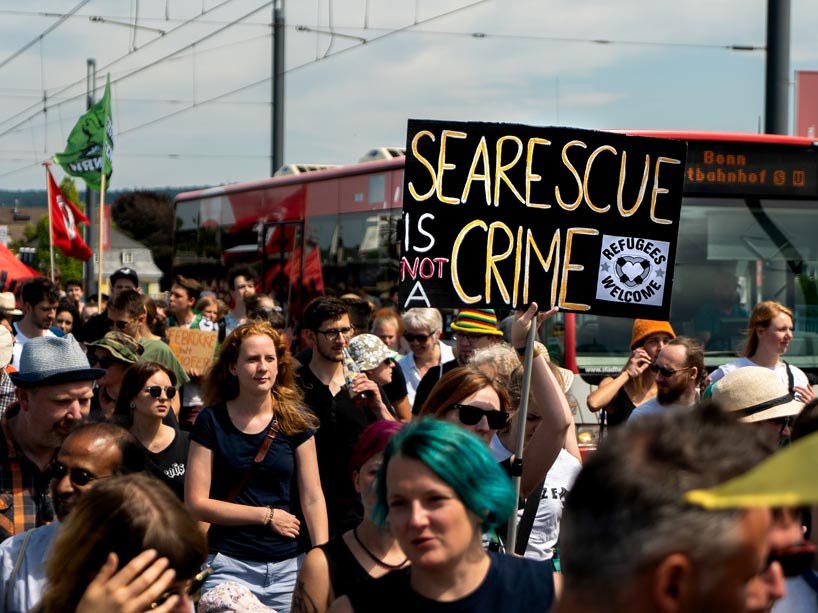World expert tackles looming immigration and integration challenges

Anna Triandafyllidou believes the world can learn from Canada’s immigration and integration policies. Photo by Clifton Li.
The image of Alan Kurdi, a Syrian boy who drowned and washed up on Turkish shores, captured Canada’s attention in 2015. Political crises, deepening economic transformation and the effects of climate change have created a perfect storm for refugees and economic migrants.
Now more than ever, Ryerson University is poised to lead the conversation.
Professor Anna Triandafyllidou, Ryerson’s Canada Excellence Research Chair (external link) (CERC) in Migration and Integration, joined the Faculty of Arts in 2019. Triandafyllidou – who is fluent in English, French, Italian, Spanish and Greek – hopes her research platform and her international network of migration scholars will help Ryerson strengthen its voice as a globally recognized leader in migration, integration, refugee and diaspora studies.
From Florence to Toronto
After receiving the CERC award, the only one awarded to the social sciences in 2019, Triandafyllidou came to Ryerson from her previous post at the European University Institute in Italy. Her Florentine, medieval-era office has now been replaced by glass-filled spaces in the Centre for Urban Innovation.
With $21 million in combined funding over seven years from Ryerson and the federal government, Triandafyllidou is building a team of scholars across the university to tackle an ambitious research agenda.
“My interest is in learning from the Canadian experience but also thinking outside the box, anticipating the migration challenges for 2050, like climate-change refugees, increasingly diverse cities, the shift towards automation and AI in the labour market, addressing the demographic challenge, and of course making the most of our Canadian identity in diversity,” she says.
Critical mass for migration and integration studies
Triandafyllidou established the Migration Working Group in September, providing a new intellectual hub for faculty, graduate students and other collaborators. On January 29, she’s hosting the CERC program’s first public event, bringing renowned British scholar Tariq Modood (external link) to campus for a panel discussion on secularism and multiculturalism, along with two other respected Canadian thinkers.
On February 20 and 21, the CERC will host its inaugural conference, Migration 2030: Challenges and Opportunities for Canada and the World – attracting scholars from Europe, West Africa, South America, India and Australia to Ryerson – to debate a range of issues including the governance of migration in a changing world, challenges of temporary migration and integration, the role of gender and the promise of new IT methodologies for studying migration.
Triandafyllidou’s CERC appointment creates critical mass for Ryerson’s existing research strengths. The university is home to the Ryerson Centre for Immigration and Settlement as well as the country’s first and only master’s program in immigration and settlement studies.
Triandafyllidou wants to tackle three questions:
What effects do technological and economic forces have on immigration?
Triandafyllidou notes that migration from one part of the globe to another, on the surface, looks easier than it did in the past. With the world now connected through the Internet, most migrants are no longer getting on ships, travelling for months to destinations unknown and penning hand-written letters to their loved ones, as they did 40 years ago.
On the other hand, our lives are more complicated. Changes in economic conditions and longer life expectancies mean that major milestones like going to school, finding stable employment and retiring with a pension may cease to occur in a tidy, linear process. These transformations leave many feeling insecure. Triandafyllidou thinks that while some people believe stopping the flow of migrants is the solution to their economic uncertainty, this mindset doesn’t adequately consider that immigration is one of many elements of our changing world and brings with it more benefits than costs.
“Migration is just one facet of complex processes that are largely unstoppable. What we need are better policies to manage work and welfare transformations, as well as migration flows,” she says.
What role do cities play in addressing migration challenges?
Rapid urbanization continues, especially in the economically dynamic regions of Africa and Asia. Triandafyllidou wants to know precisely how cities deal with the rapid rise of their diverse population. She uses comparative methodologies:
“Bangalore, for instance, is a city with a big high-tech industry. You can compare it with a city like Toronto. The basis of comparison can be a thriving tech sector, a rising middle class, population size and status as an international migration hub,” she says. Many cities are finding ways to leverage their diversity as an asset. Researchers like Triandafyllidou want to know how they can succeed.
How should Canada manage labour migration?
Canada’s points-based immigration system is looked to around the world as one way to manage labour migration. Opportunities exist, however, to re-think its merits and expand on criteria that includes a different mix of hard and soft skills. A recent study by Statistics Canada (external link) shows that 42 per cent of university-educated recent immigrants are overqualified for their jobs, compared to 23 per cent for native-born Canadians. This raises questions about how the system can do better to integrate newcomers into the labour market.
“I think a big misconception right now is that the majority of immigration to Canada comes from refugees, where in fact it’s a small minority – just 15 per cent, while economic migrants are nearly 60 per cent of the total,” Triandafyllidou says, citing the federal government’s 2018 Annual Report to Parliament on Immigration (external link) .
When comparing Canada to the U.S., she says that while the latter is seen as the land of opportunity, “Canada is much more the land of opportunity and solidarity. People are not left to their own devices, there is social protection for all.” How the country tackles issues like increasing numbers of migrant workers and international students, who are in the country precariously, will need to be grounded in the country’s historic concern for the well-being of vulnerable groups.

German protesters demand action on refugee crisis. Photo by Mika Baumeister.
Canada’s immigration narrative is dynamic
While xenophobic or nationalist sentiments in multicultural countries like Australia, Britain, France and The Netherlands have taken root, “Canada is a little bit of an exception – a fortunate exception,” says Triandafyllidou.
She believes this is because Canada’s identity as an immigrant society is dynamic, resilient and has always maintained a humanitarian aspect. In her view, most Canadians’ stance on immigration balances economic concerns with a sense of responsibility for people seeking protection.
Triandafyllidou believes that while the Canadian experience with immigration provides lessons to other countries, there is no room for complacency. She compares successful multiculturalism to successful marriages.
“In marriage you must never relax. You must always work to keep the relationship strong. I think it’s like this with multiculturalism,” she says. “You should always work to make sure your narrative is up-to-date and reflects your people.”